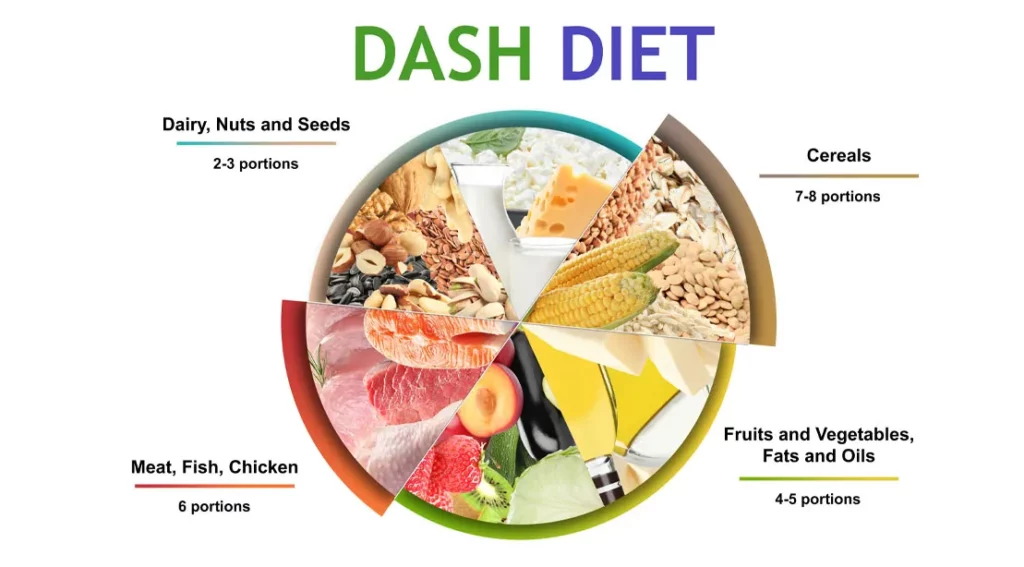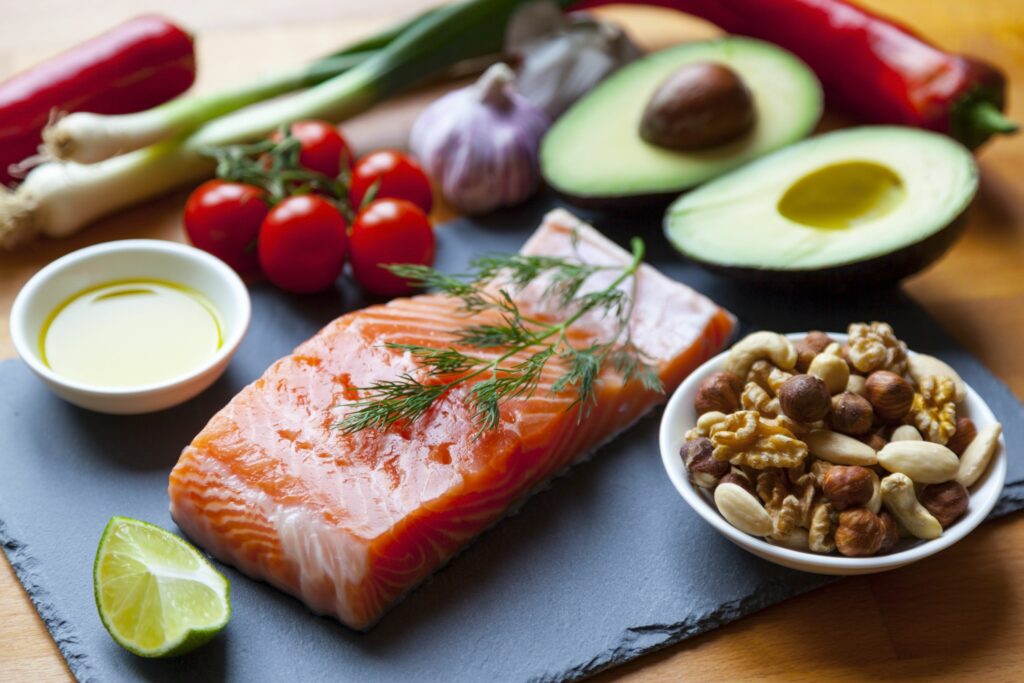The DASH Diet: Lowering Blood Pressure Through Nutrition
The DASH (Dietary Approaches to Stop Hypertension) diet is widely recognized as one of the most effective approaches to lowering blood pressure through nutrition. High blood pressure, also known as hypertension, is a prevalent condition affecting millions of people worldwide. The relationship between diet and blood pressure has been extensively studied, and the DASH diet has emerged as a powerful tool for managing and reducing high blood pressure levels.
What is High Blood Pressure?
High blood pressure occurs when the force of blood against the arterial walls is consistently too high. It is often referred to as the “silent killer” because it rarely exhibits symptoms until it reaches a dangerous level. Uncontrolled hypertension can lead to serious health complications such as heart disease, stroke, and kidney problems. While medication can be prescribed to manage high blood pressure, lifestyle modifications, including dietary changes, play a crucial role in prevention and control.
The Link Between Diet and Blood Pressure
Various studies have demonstrated a strong association between the typical Western diet and high blood pressure. A diet high in saturated fats, cholesterol, sodium, and processed foods has been linked to increased blood pressure levels. On the other hand, adopting a healthy eating plan can effectively reduce blood pressure and contribute to overall cardiovascular health.
What is the DASH Diet?
The DASH diet was developed by the National Heart, Lung, and Blood Institute (NHLBI) to combat hypertension and promote heart health. Its primary focus is on consuming nutrient-rich foods that are low in sodium. The DASH diet emphasizes a balanced intake of fruits, vegetables, whole grains, lean proteins, and low-fat dairy products, with limited consumption of saturated fats, sweets, and sodium.

Benefits of the DASH Diet in Lowering Blood Pressure
Decreased Sodium Intake
One of the key elements of the DASH diet is reducing sodium intake. Excessive sodium consumption has been closely linked to elevated blood pressure levels. The DASH diet encourages individuals to limit their sodium intake to no more than 2,300 milligrams (mg) per day, or ideally 1,500 mg for those at risk for hypertension.
Increased Consumption of Fruits and Vegetables
Fruits and vegetables are naturally low in sodium and high in essential nutrients such as potassium, magnesium, and fiber. These nutrients have been shown to have a positive impact on blood pressure regulation. The DASH diet encourages individuals to consume a variety of fruits and vegetables, aiming for at least 4-5 servings each day.
Incorporation of Whole Grains
Whole grains, such as brown rice, quinoa, and whole wheat bread, are integral to the DASH diet. These foods are rich in fiber, which can help lower blood pressure. The DASH diet recommends incorporating 6-8 servings of whole grains daily.
Focus on Lean Proteins
Lean proteins, such as fish, poultry, beans, and nuts, are staples of the DASH diet. These protein sources are low in saturated fat and cholesterol, which is beneficial for heart health. The DASH diet suggests consuming 6 or fewer servings of lean protein per day.
Emphasis on Low-Fat Dairy Products
Low-fat dairy products, including milk, yogurt, and cheese, are encouraged on the DASH diet. These foods are excellent sources of calcium, potassium, and protein. The DASH diet recommends 2-3 servings of low-fat dairy products per day.
DASH Diet Guidelines and Recommendations
The DASH diet provides specific guidelines and recommendations to follow for optimal blood pressure management. These guidelines include:
- Eating a variety of nutrient-dense foods
- Limiting saturated fats and cholesterol
- Incorporating more fruits and vegetables into meals and snacks
- Increasing whole grain consumption
- Choosing lean proteins and plant-based protein sources
- Reducing sodium intake
- Enjoying low-fat dairy products
- Moderating alcohol consumption
To effectively implement the DASH diet, it is essential to plan meals and snacks in advance, ensuring a balanced intake of different food groups throughout the day.
Meal Planning and Sample DASH Diet Menu
Planning meals according to the DASH diet principles can greatly facilitate adherence to the eating plan. Here is a sample menu for a day following the DASH diet:
- Breakfast: Vegetable omelet with whole wheat toast and a side of fresh berries.
- Morning snack: Greek yogurt with sliced almonds.
- Lunch: Grilled chicken salad with mixed greens, cherry tomatoes, cucumbers, and a light vinaigrette dressing.
- Afternoon snack: Carrot sticks with hummus.
- Dinner: Baked salmon with quinoa and steamed broccoli.
- Evening snack: Apple slices with almond butter.
It is important to note that portion sizes, overall calorie intake, and individual dietary needs may vary. Consulting a healthcare professional or a registered dietitian can help tailor the DASH diet to personal circumstances.
DASH Diet and Weight Management
The DASH diet not only helps lower blood pressure but also supports weight management. By promoting the consumption of nutrient-dense foods and limiting high-calorie, processed foods, the DASH diet encourages weight loss or maintenance. By maintaining a healthy weight, individuals can further reduce their risk of developing high blood pressure and associated health problems.
DASH Diet and Heart Health
The DASH diet’s emphasis on foods low in saturated fats and cholesterol makes it an excellent choice for heart health. By reducing the intake of these unhealthy fats and focusing on lean proteins, whole grains, fruits, and vegetables, the DASH diet supports cardiovascular wellness. Studies have shown that following the DASH diet can significantly lower the risk of heart disease and improve overall heart health.

DASH Diet and Diabetes Management
The DASH diet’s balanced approach to eating, with a focus on whole grains, lean proteins, fruits, and vegetables, can also benefit individuals with diabetes. By promoting blood sugar control and providing a variety of essential nutrients, the DASH diet can support diabetes management and reduce the risk of complications associated with the condition.
Understanding the Role of Exercise in Conjunction with the DASH Diet
While nutrition plays a vital role in managing blood pressure, incorporating regular physical activity into one’s routine further enhances the benefits of the DASH diet. Engaging in aerobic activities, strength training, and other forms of exercise can help maintain a healthy weight, improve cardiovascular health, and effectively manage hypertension.
Incorporating the DASH Diet into Your Lifestyle
Adopting the DASH diet as a lifelong eating plan can be achieved by gradually implementing changes and making sustainable choices. Here are some tips for successfully incorporating the DASH diet into your lifestyle:
- Start by gradually reducing your sodium intake and flavoring meals with herbs and spices instead.
- Increase your intake of fruits and vegetables by incorporating them into your meals and snacks.
- Replace refined grains with whole grains.
- Choose lean protein sources and opt for plant-based protein options more often.
- Select low-fat dairy products or dairy alternatives.
- Limit your consumption of processed foods, sugary beverages, and foods high in saturated fats.
- Prepare homemade meals using fresh ingredients to have better control over your nutritional intake.
Tips for Success and Adherence to the DASH Diet
Maintaining long-term adherence to the DASH diet can be challenging, but these tips can help enhance your success:
- Set achievable goals: Start with small, manageable changes and gradually build upon them.
- Be prepared: Plan your meals and snacks in advance, ensuring you have healthy options readily available.
- Seek support: Joining a support group or involving a friend or family member can provide motivation and accountability.
- Keep track: Monitor your progress, blood pressure readings, and food intake to identify patterns and stay on track.
- Celebrate milestones: Acknowledge and reward yourself for sticking to the DASH diet and achieving goals along the way.
Limitations and Precautions of the DASH Diet
While the DASH diet has proven to be effective in lowering blood pressure, there are a few limitations and precautions to consider:
- Individual responses: Not everyone may experience the same results, and individual factors may influence the effectiveness of the DASH diet.
- Sodium sensitivity: Some individuals may be more sensitive to sodium, necessitating stricter sodium restrictions.
- Nutrient deficiencies: It is essential to ensure that nutrient needs are met when following the DASH diet. Consulting with a healthcare professional or registered dietitian can help address any potential deficiencies.
- Medication adjustments: If currently on blood pressure-lowering medications, it is important to consult with a healthcare professional before making significant changes to the diet, as medication adjustments may be necessary.
FAQs
Is the DASH diet suitable for everyone?
The DASH diet can be followed by most individuals, but it is always best to consult with a healthcare professional or registered dietitian to determine if it is appropriate for your specific health needs.
Can the DASH diet help with weight loss?
Yes, the DASH diet can support weight loss or weight management, as it encourages the consumption of nutrient-dense foods and limits high-calorie processed foods.
Are there any side effects of following the DASH diet?
Following the DASH diet generally does not have any significant side effects. However, some individuals may experience initial difficulties adjusting to lower sodium intake or changes in their eating habits.
Can the DASH diet be combined with other dietary approaches?
The DASH diet can be combined with other dietary approaches, such as the Mediterranean diet or the vegetarian diet, to further enhance health benefits.
How long does it take to see results from following the DASH diet?
The timeline for seeing results may vary depending on each individual’s starting point, overall health, and adherence to the DASH diet. However, consistent adherence to the DASH diet can lead to noticeable improvements in blood pressure levels within a few weeks to months.
Can children follow the DASH diet?
The DASH diet can be modified to suit the needs of children, but it is important to consult with a pediatrician or registered dietitian to ensure proper nutrition and growth for children.
Conclusion
The DASH diet offers a practical and sustainable approach to lowering blood pressure through nutrition. By emphasizing the consumption of nutrient-dense foods, limiting sodium intake, and promoting a balanced lifestyle, the DASH diet can significantly contribute to improved cardiovascular health. It is essential to remember that the DASH diet should be followed in conjunction with other healthy habits, including regular exercise, weight management, and stress reduction, to achieve optimal results.
Also Read:



